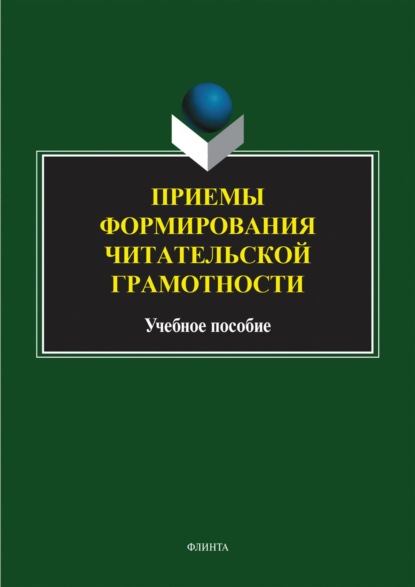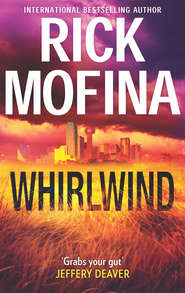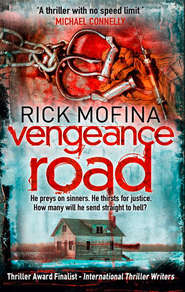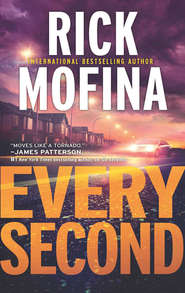По всем вопросам обращайтесь на: info@litportal.ru
(©) 2003-2025.
✖
Free Fall
Автор
Год написания книги
2018
Настройки чтения
Размер шрифта
Высота строк
Поля
“Likely someone with a tinfoil hat.”
“But what if it’s not a nutcase?”
“Did you respond, try to engage them in conversation?”
“Yes. I got the error message ‘Permanent failure, unknown user’ message.”
“If this is real, you got a helluva story. Whatever it is, you should alert Chuck.”
“That’s the plan.”
Kate printed the email and headed for Chuck Laneer’s office. He wasn’t there. She found him coming down the hall and handed him the email.
“Just got this.”
Chuck pushed his glasses to the top of his forehead and read. He removed them when he’d finished and tapped one finger to his teeth, something he always did.
“Do you have any idea who sent this, Kate?”
“None. It’s anonymous.”
“Did you respond?”
“Yes and I got nothing, a failed-delivery message.”
“Did you share it?”
“No.”
“Make several paper copies and stand by. I’m calling a meeting on how we’re going to handle this.”
* * *
Fifteen minutes later, Kate, Chuck and several senior editors sat at the big polished table in the newsroom’s main boardroom.
They’d reviewed the email and Kate briefed them on all she knew. “So it boils down to this,” she said. “If we don’t write a story crediting this person for EastCloud Forty-nine Ninety, they’ll harm another flight.”
“Have we had our IT security people try to track the source, verify it?” Marisa McDougal, head of world features, asked.
“Yes, I’ve got them on it,” Chuck said, “but they’re indicating that it’ll likely be impossible, given our limited resources.”
“So do we publish this or not?” Kate asked.
“I say we publish it,” Reeka said. “It’s our exclusive.”
“Why come to us with this?” Dean Altman, chief of all domestic bureaus, asked. “Why not simply post it online?”
“If you get us to do it, it gives you credibility,” Chuck said. “It gives the claim and the threat currency, and the advantage of our global reach. Our story would get redistributed online with authority, so it’d be a win-win.”
“I say we run it,” Reeka said. “It’s our duty to report this.”
“It’s a little more complicated than that,” said Howard Kehoe, who headed all foreign bureaus. “Right now, we can’t verify the validity of this thing. We run this with the threat and we’ll cause havoc to air travel around the world.”
“But our job is to inform the public,” Marisa said. “There’s a public safety issue here.”
“That’s just it,” Kehoe said. “If we run this claim and this threat, will it make air travel any safer? If we don’t run it, are we truly risking lives? We have the fact the captain said something went wrong on the flight, and now this person is claiming that somehow they took over the plane. How? Does the technology to do this sort of thing even exist? They’re a bit short on details.”
“I’m wondering why video from passengers in the cabin hasn’t surfaced yet,” Bruce Dabney, the business editor, said. “These days it’s almost guaranteed somebody has shot something.”
“That’s right, and my point,” Kehoe said, “is that we don’t yet have any official, investigative confirmation from the NTSB, or the FAA, or anyone, on what happened. I think we need to be careful here.”
“Could it be a terrorist threat?” Marisa asked.
“There’s no indication in the note, no claim to affiliation, no demand or condemnation,” Kehoe said.
“What about the name Zarathustra?” Reeka asked.
“That’s the name of a Persian prophet from around seven or eight hundred BC,” Chuck said. “As I recall, he taught about humanity following one God and the priority of living a moral life.”
“You’re dating yourself by a few centuries, Chuck.” Marisa smiled.
“I took a few philosophy courses in school.”
“So what would you like me to do?” Kate asked, glimpsing something through the boardroom’s floor-to-ceiling glass walls. Sloane was talking with Mark Reston, who was nodding to the meeting. Sloane looked uneasy.
“We’re walking an ethical tightrope here,” Graham Lincoln, Newslead’s editor-in-chief, said. “If we run a story now and it turns out that the note is a practical joke, we open the floodgates to all sorts of crackpots and our credibility takes a hit. I think under the circumstances we’re not going to publish it.”
“Ever?” Kate asked.
“For now,” Lincoln said. “Of course, we have a moral responsibility to protect public safety, so we’ll alert the authorities, the FBI in this case. We’ll ask them if we’re the only news organization to receive this note, ask them not to share our note, and to keep us informed on their investigation of it. Above all, we’ll investigate journalistically. That is our responsibility and our duty. That’s what we’ll do.”
Lincoln let a moment pass for his direction to sink in around the table.
“I think we’re done here. Chuck, Kate, contact the people at Federal Plaza straightaway, get the ball rolling. And remember, folks, everything said in this room remains confidential.”
As the meeting broke and editors moved from the boardroom, Kate looked again at Sloane.
He was still talking with Reston and watching her.
Intensely.
Fifteen
Manhattan, New York
“What’s your information on EastCloud Flight Forty-nine Ninety?”
Special Agent Anne Bartell was unsmiling, as was her partner, Agent Phil Enroy, who’d clicked his pen and poised it over his pad. After Kate was cleared at security, they’d taken her to an interview room on the twenty-eighth floor of the FBI’s New York Field Office in Lower Manhattan.











